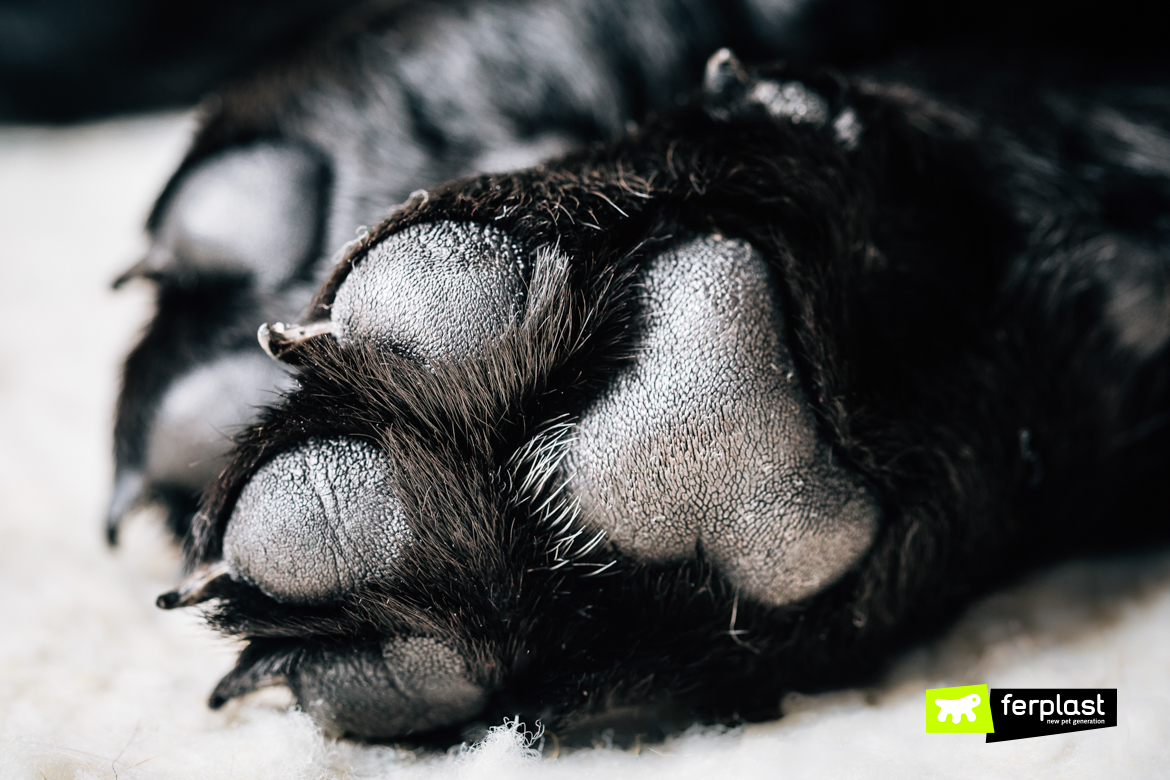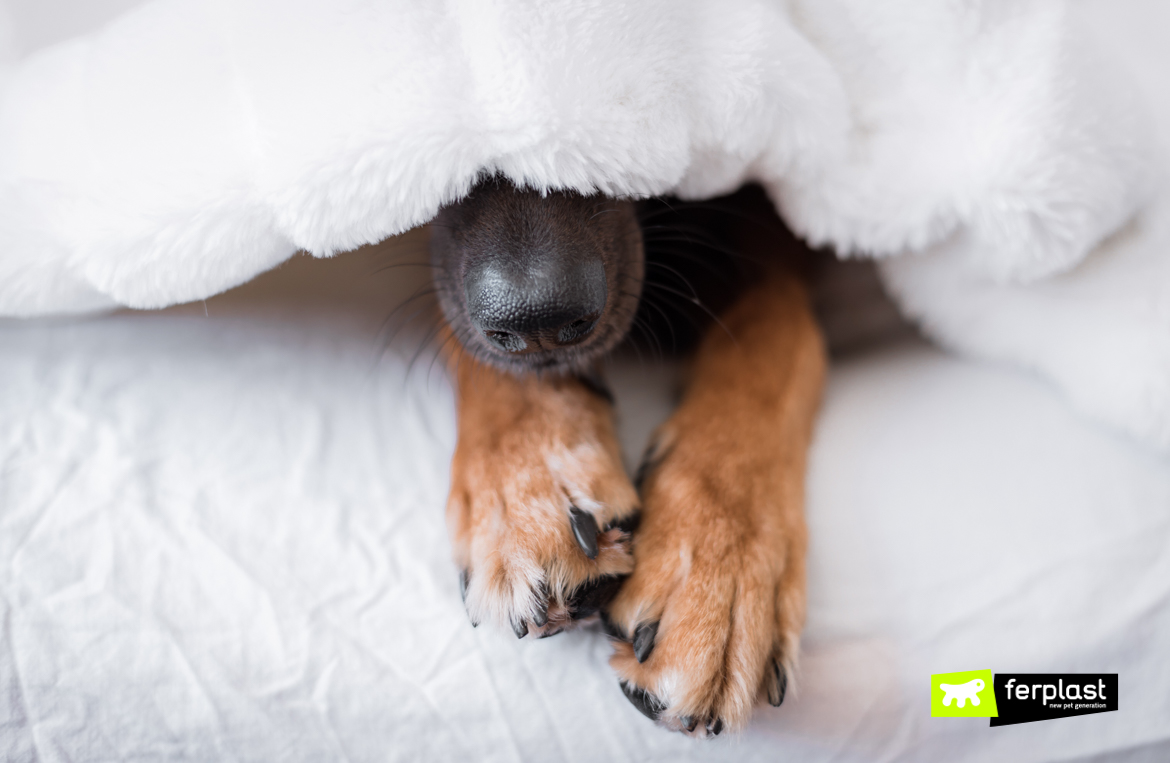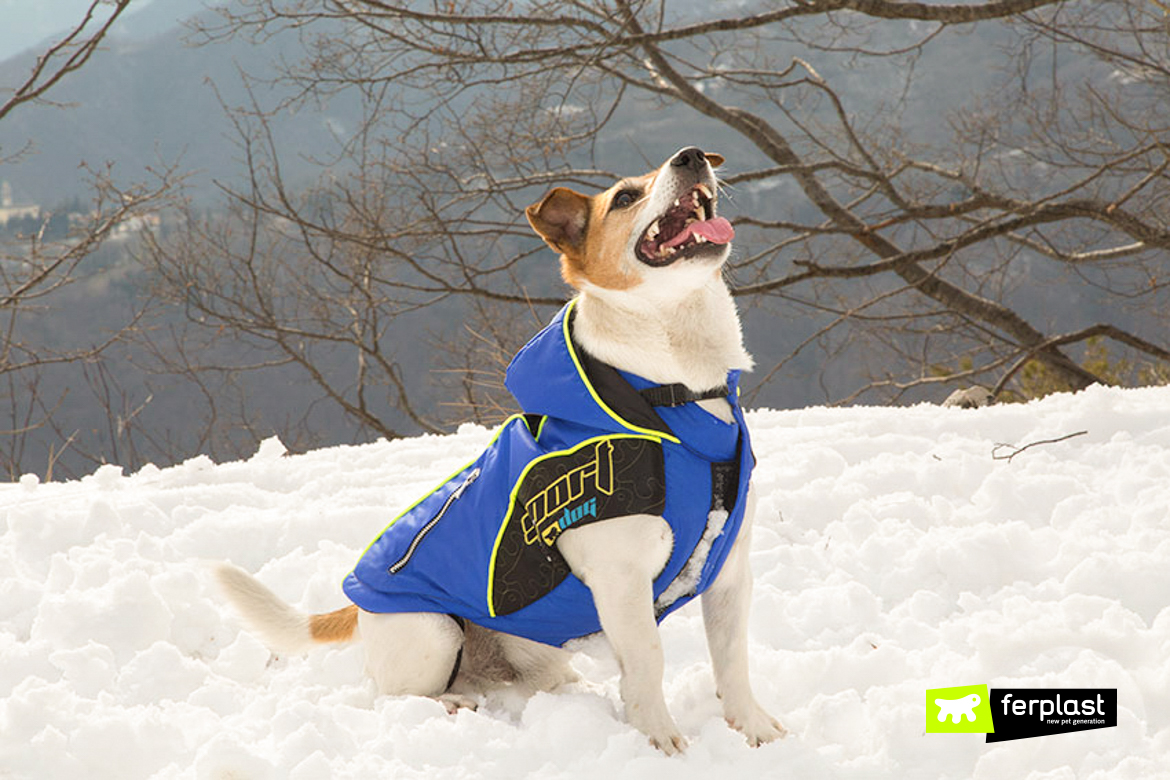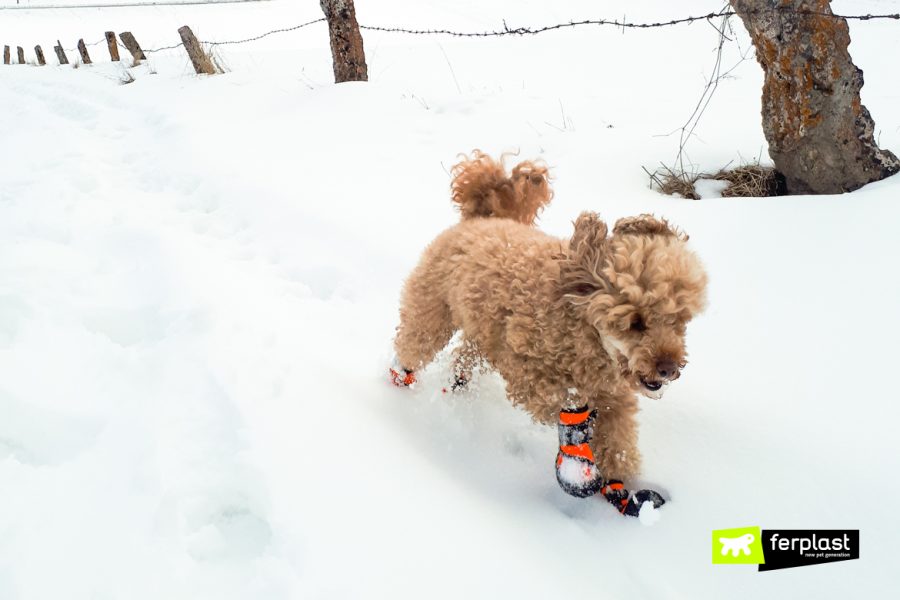Dog’s paws, in summer as in winter, can be subject to risks. They can get sunburned in the heat, and they risk freezing in the cold.
Chilblains on the dog’s paws are a problem associated with ice and snow. A few precautions should be borne in mind to prevent them from occurring. If they do occur, here’s what to do.
What are dogs’ legs like?
Dogs’ paws enable them to carry out more than half of their daily activities, as they perform the function of movement. They are complex and made up of bones, skin, muscles and tendons. The pads are a very important part of the dog’s paws, as they act as shock absorbers and protect the bones and joints from impact. Thanks to a light fatty membrane, they also protect against extreme temperatures. They are rough and cause friction with surfaces.
The dog’s paws in contact with snow and ice
When dogs are left in the snow and cold for long periods, their paws can become dry, cracked, frozen and injured. The dogs most prone to such injuries are those that are not used to being in the snow. Their limbs are less prepared for cold, snowy and icy surfaces and are more prone to frostbite. When they crack and dry out excessively, there is a risk of cuts and injuries.
Snow contact problems
When walking on wet, snowy surfaces, the hair surrounding the pads becomes damp and freezes, resulting in icy needles between the phalanges, which can cause discomfort and pain.
Another common problem is the formation of chilblains. On contact with the cold surface, the skin of the pads cracks and bleeds. Lesions develop in the fingertips, which, over time, turn into sores. The symptoms of chilblains are: cold, numb skin, black or bluish skin, flaking, inflammation, swelling and pain.
How to treat dog’s paws
If the dog’s paws are damaged by the cold, the first thing to do is to keep the animal warm, cover the injured areas with a warm towel and compress them with warm water. When the area begins to return to its normal colour, the paws must be dried and bandaged. If this is not the case, contact your vet.
How to prevent risks
The first thing to do with your dog in the snow is to organise short walks. Wounds and injuries can occur even without your dog showing any discomfort.
When walking, it is advisable to protect your dog’s paws with protective shoes made of padded neoprene with non-slip soles. They are useful on icy and snowy surfaces and also when your dog’s paws are already injured. Alternatively, you can opt for trekking shoes with non-slip rubber soles for walking on uneven surfaces and more grip on ice.
When you return home you should wash your dog’s paws with lukewarm water and wipe them with a warm cloth to remove any snow and melt the ice. As a precaution, you can apply a cream or balm to prevent any cracking that may occur in the following days.
To make sure that the time spent in the snow is a positive memory, you should pay attention to the amount of time you are exposed to the cold and take the right precautions to avoid discomfort and injury to your paws. If chilblains develop, try to treat them by keeping your dog’s paws warm and, if necessary, contact your vet.

